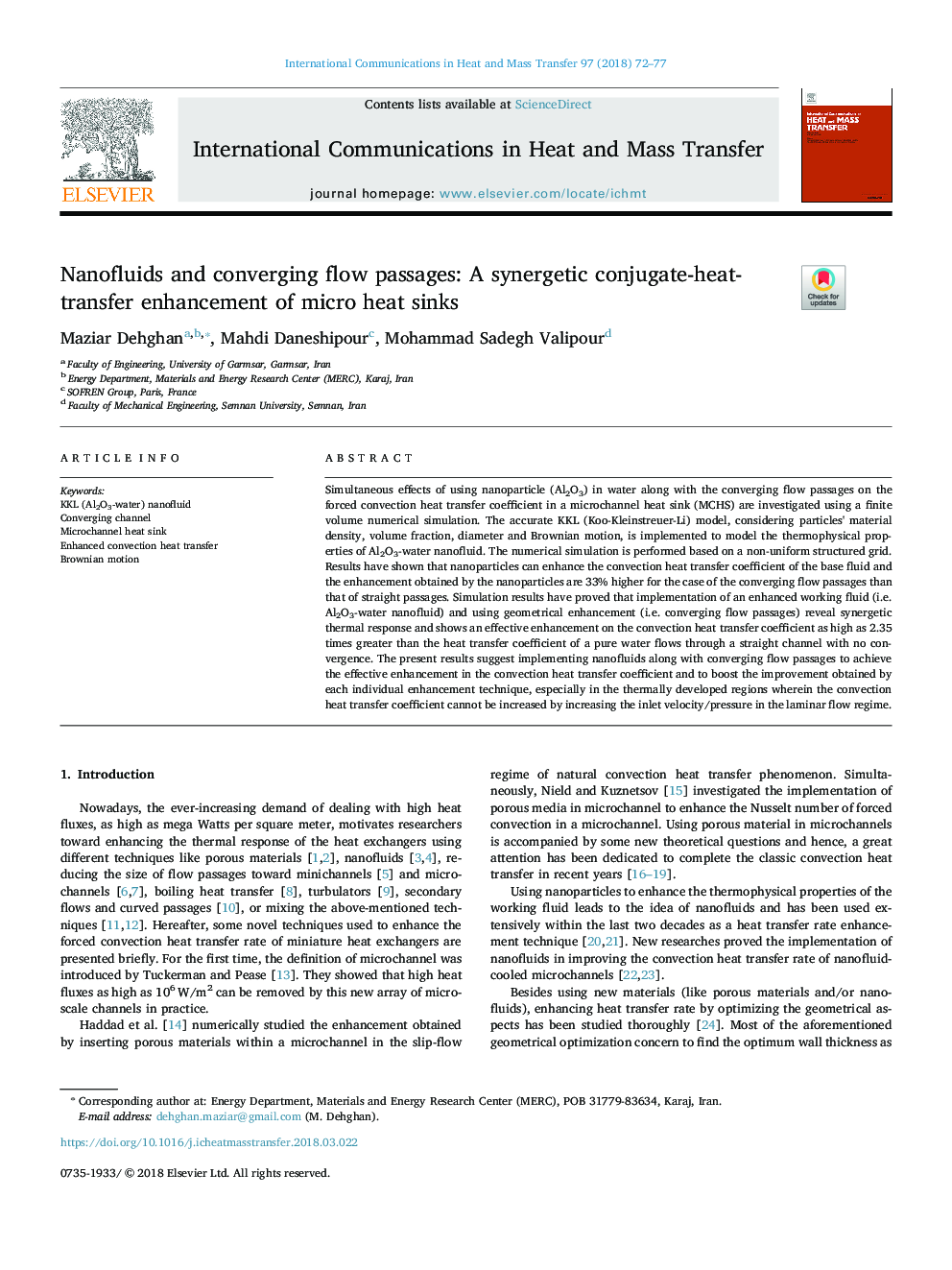| Article ID | Journal | Published Year | Pages | File Type |
|---|---|---|---|---|
| 7052722 | International Communications in Heat and Mass Transfer | 2018 | 6 Pages |
Abstract
Simultaneous effects of using nanoparticle (Al2O3) in water along with the converging flow passages on the forced convection heat transfer coefficient in a microchannel heat sink (MCHS) are investigated using a finite volume numerical simulation. The accurate KKL (Koo-Kleinstreuer-Li) model, considering particles' material density, volume fraction, diameter and Brownian motion, is implemented to model the thermophysical properties of Al2O3-water nanofluid. The numerical simulation is performed based on a non-uniform structured grid. Results have shown that nanoparticles can enhance the convection heat transfer coefficient of the base fluid and the enhancement obtained by the nanoparticles are 33% higher for the case of the converging flow passages than that of straight passages. Simulation results have proved that implementation of an enhanced working fluid (i.e. Al2O3-water nanofluid) and using geometrical enhancement (i.e. converging flow passages) reveal synergetic thermal response and shows an effective enhancement on the convection heat transfer coefficient as high as 2.35 times greater than the heat transfer coefficient of a pure water flows through a straight channel with no convergence. The present results suggest implementing nanofluids along with converging flow passages to achieve the effective enhancement in the convection heat transfer coefficient and to boost the improvement obtained by each individual enhancement technique, especially in the thermally developed regions wherein the convection heat transfer coefficient cannot be increased by increasing the inlet velocity/pressure in the laminar flow regime.
Related Topics
Physical Sciences and Engineering
Chemical Engineering
Fluid Flow and Transfer Processes
Authors
Maziar Dehghan, Mahdi Daneshipour, Mohammad Sadegh Valipour,
